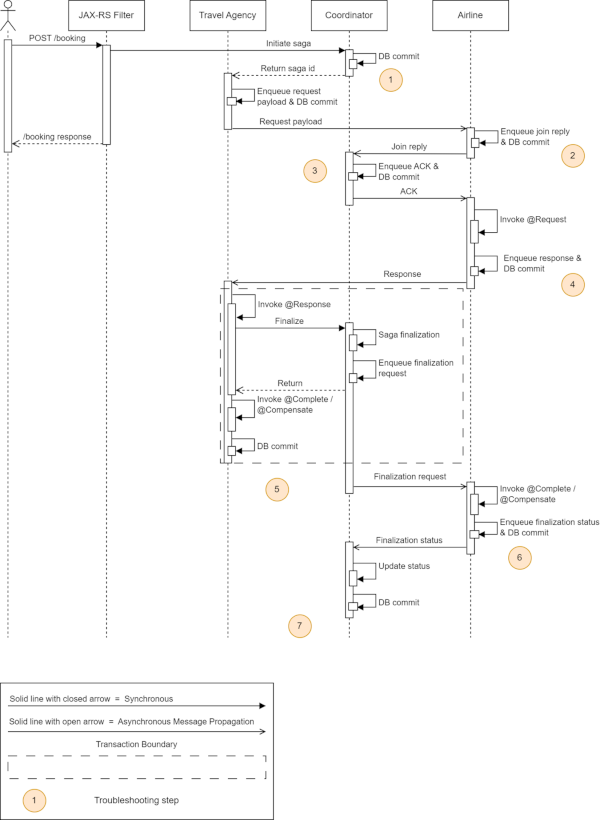A.1 Appendix: Troubleshooting the Saga Framework
This appendix describes different ways of troubleshooting problems that may occur when you use the Saga framework with Java applications.
The Saga framework is a complex distributed system comprising multiple pluggable databases, and background and foreground database processes. The Saga framework uses database Advanced Queueing (AQ) or Transactional Event Queues (TxEventQ) as its event mesh. An event mesh seamlessly distributes events between various entities in a Saga topology. AQ message propagation and notification features enable event transmission to multiple entities in the Saga topology. The following call-return diagram depicts the lifetime of a simple Saga application that is described in the example program.
See Also:
Figure -1 Saga Lifecycle and Call-return Flow

Note:
-
The Saga framework uses message propagation between the initiator and the participant using a message broker as an intermediary. It also relies on AQ notification framework to allow participants and coordinator to respond to the messages received. The message broker is not depicted in this picture.
-
A database commit (DB commit) differs from a Saga commit (Saga finalize), in that, a database commit commits the local database transaction at the participant or initiator databases performed for a Saga. The Saga commit, on the other hand, commits the Saga and all its transactions performed by various participants on behalf of a Saga. The Saga commit is the final commit for all local transactional changes in a Saga as a group. These transactional changes were committed by various Saga participants previously using their respective DB commits. Conversely, a Saga rollback cancels the local transactional changes for a Saga as a group by doing compensation.
-
The Saga framework provides an asynchronous platform for developing Sagas. The asynchronous platform is supported by AQ messaging in the database. Certain operations, however, are synchronous and accomplished inside the database server. For example, Saga initialization is a synchronous operation. Saga finalization at the coordinator and at the initiator is another example of a synchronous operation.
-
For the current version of Saga infrastructure, the initiator and coordinator are co-located in a PDB. A co-located initiator and coordinator allows the finalization of a Saga using a single database transaction encompassing both entities. See the Transaction Boundary in the diagram highlighting this aspect.